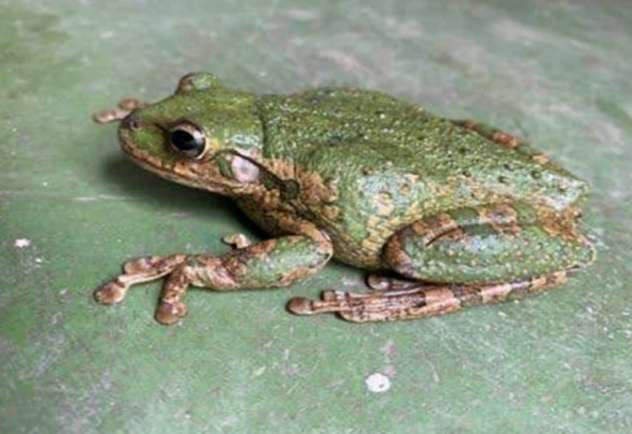Jamaica’s Defense Against Cuban Incursion
The Cuban Tree Frog, an invasive species, has infiltrated Jamaica, posing a significant threat to the island’s delicate ecosystem and impacting human life. Originating from Cuba, these amphibians are believed to have hitched a ride on cargo ships, their small size enabling them to stow away undetected in containers. This unintended introduction has sparked alarm among environmentalists and government agencies as the frogs rapidly colonize new territories, spreading across eight of Jamaica’s fourteen parishes. Recognizable by their large size, reaching up to three inches in length, coupled with long legs, substantial toe pads, and warty skin, these frogs exhibit a variety of colors ranging from white and green to brown and orange. Their presence not only disrupts the natural balance but also poses a direct threat to human activities, particularly agriculture.
The Cuban Tree Frog’s voracious appetite is a primary cause for concern. As aggressive predators, they consume a wide range of native fauna, including smaller frogs, lizards, birds, and even small snakes. This indiscriminate predation disrupts the established food chain, placing indigenous species at risk and potentially leading to population declines. Furthermore, the absence of natural predators in Jamaica allows the Cuban Tree Frog population to flourish unchecked, exacerbating the ecological imbalance. Their toxic skin secretions, while a defense mechanism against potential predators, add another layer of complexity to the issue, making them unpalatable and even dangerous to native animals.
The potential for crossbreeding with native Jamaican frog species is another worry for scientists, although concrete evidence of hybridization remains elusive. Such interbreeding could lead to genetic dilution or even the extinction of native frog populations, further diminishing Jamaica’s biodiversity. The impact of this invasive species extends beyond the natural environment, affecting human life in various ways. Their toxic skin secretions can cause irritation to sensitive individuals, and their unexpected appearances in homes and public spaces often trigger alarm and discomfort. More alarmingly, these frogs have begun preying on bees in apiaries, posing a direct threat to beekeepers’ livelihoods and potentially disrupting Jamaica’s agricultural sector, which relies on bees for pollination.
Recognizing the urgency of the situation, the National Environmental Planning Agency (NEPA) and the Caribbean Coastal Area Management Foundation (CCAM) have initiated a multifaceted approach to combat the Cuban Tree Frog invasion. This strategy incorporates both public education and active eradication measures. Community meetings are being organized to educate residents about the frogs’ ecological impact, identification, and control methods. Practical strategies for managing the frog population are also being disseminated, including the deployment of PVC pipe traps designed to attract and capture the frogs. Captured frogs are then humanely euthanized. Citizens are urged to eliminate standing water around their homes to curb breeding, as these frogs can lay up to 100 eggs at a time, rapidly multiplying their numbers.
NEPA has provided clear guidelines for the humane euthanization of captured frogs, recommending a swift strike to the back of the head with a blunt or sharp object. The use of harmful chemicals like bleach or hot water is discouraged. Public participation is crucial to the success of these control efforts. NEPA encourages citizens to report any sightings of Cuban Tree Frogs, providing details of the location and, if possible, photographic evidence to assist in tracking and monitoring the spread of the invasion. This citizen science approach is particularly vital in protected areas such as the Portland Bight, home to endangered species like the Portland Ridge Cave Frog, which are particularly vulnerable to the Cuban Tree Frog’s predation.
The collaborative efforts of government agencies, environmental organizations, and the public are essential in mitigating the environmental, agricultural, and social impacts of this invasive species. The Cuban Tree Frog invasion presents a complex challenge, demanding a multi-pronged strategy encompassing public awareness, active population control, and continuous monitoring. The future of Jamaica’s native ecosystems and agricultural stability hinges on the success of these combined efforts. Continuous research and adaptation of control methods will be critical to staying ahead of this invasive species and protecting Jamaica’s unique biodiversity. The urgency of the situation necessitates a sustained commitment from all stakeholders to combat this ecological threat and ensure the long-term health of the island’s environment.
Share this content:












Post Comment